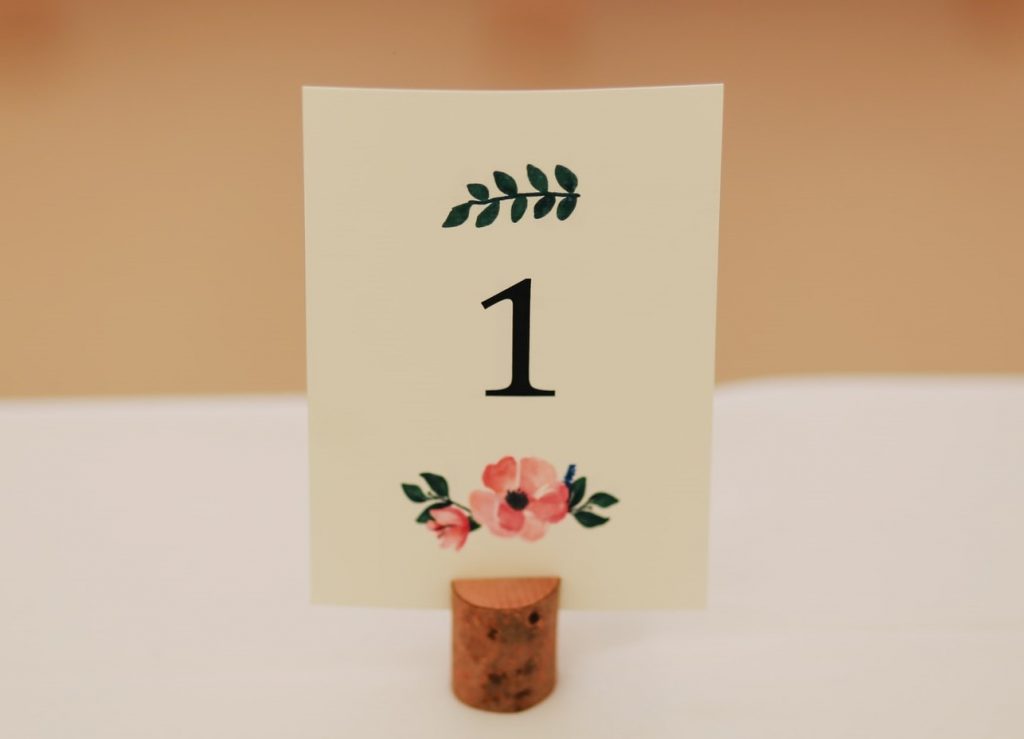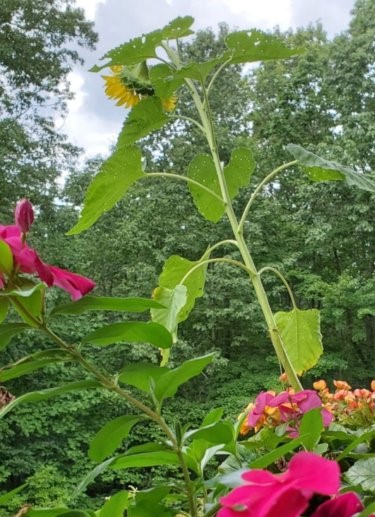
One of the flower boxes on the back porch was filled with tangerine-color geraniums. Facing southwest, they received the full blessing of the sun’s encouragement to flourish. They were quite the sight…until a single stalk of something else started sprouting up in among them.
Was it a weed? I’m not the gardener in the family so I had no clue. I considered just lopping it off since it detracted from the uniform height of the other flowers.
But then I decided to wait it out. Like the beanstalk in Jack’s tale, the stalk seemed to get taller every day with more leaves extending upward. Then a tight star-like bud formed.
Yep, it was a single sunflower. We figure the seed had been dropped into the planter by one of the many birds we feed.
The site FTD.com explains the life cycle of a sunflower. It begins when the seed is planted. The germination phase, lasting up to eight days, is when roots develop and a shoot bursts through the dirt’s surface. That shoot, like most living things, is searching for sunlight. That second phase of vegetative emergence lasts nearly two weeks.
The sunflower then goes through vegetative states called V1, V2, V3, etc., so named when one leaf grows to 4 centimeters, then two leaves grow to the same length, and so on.
The reproductive phase occurs next when a bud forms within the cluster of leaves. It takes a month or so after that for the sunflower to bloom. The blooming period lasts a little less than three weeks.
The final phase of the sunflower’s life cycle is the harvesting one. After the flower droops and turns brown, the flower needs to dry out if you plan on having sunflower seeds to munch on or feed to the birds. You can follow the link below to learn more about harvesting the seeds.
Sadly, sunflowers are annuals which means you need to plant new seeds each year; they don’t revive themselves from the cold and snow as perennials do.
A sunflower is heliotropic; in the early phases before the flower is too heavy with seeds, the flower turns to follow the sun’s movement from East to West, returning to the East at night, ready to follow the first sun of the morning and soak up its life-giving energy.
Since sunflowers are tall and gangly and can topple over in the wind, gardening experts suggest planting sunflowers low and slightly sheltered, such as against a house or garage. Since I live on the side of a mountain, the back porch where ours exists is about fifteen feet off the ground in the open air.
So, against the odds, I have one beautiful sunflower. One is not enough to cut for a bouquet. One is not enough for the neighbors to admire as they walk or drive by. One is not enough to post on social media to gain bragging rights.
But one is enough to remind me to follow the light each day from dawn to dusk, returning at night to face where I fully believe the dawn will arrive again tomorrow. That means one is enough to offer hope.
One is enough.

~~~~~~
Life cycle of a sunflower from FTD.com
An earlier post from July 2016 about reaching toward the light




I grew sunflowers every year when I lived in New York and waited patiently for them to bloom — they offered hope during a difficult season of life.
Thank you for sharing this!
Miss you <3
Yes, before writing this I had never thought about sunflowers offering hope before, but it makes sense. I’m glad you found them to be so as well. And I miss you too.
THANK YOU NORMA!
Now I’m going to have to plant sunflower seeds!
You see such a beautiful relationship between life and a flower<3
You open our eyes to sooooooo many things<3
You are a treasure!!!!!!!
Love and VIRTUAL HUGS,
Judy
It turns out daughter Laura and husband Andrew visited a sunflower farm during the day before she read this post!